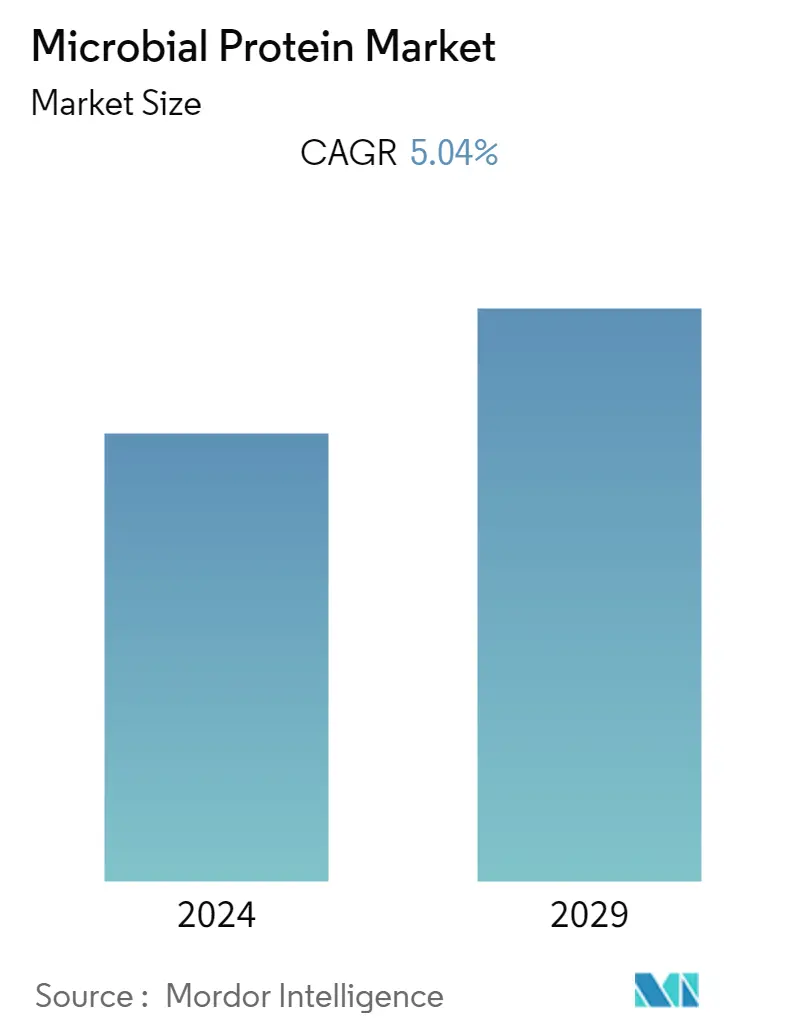Market Size of Microbial Protein Industry

| Study Period | 2019 - 2029 |
| Base Year For Estimation | 2023 |
| CAGR | 5.04 % |
| Fastest Growing Market | Asia Pacific |
| Largest Market | North America |
| Market Concentration | High |
Major Players
*Disclaimer: Major Players sorted in no particular order |
Need a report that reflects how COVID-19 has impacted this market and its growth?
Microbial Protein Market Analysis
The global microbial protein market is expected to grow from USD 24.2 million in 2023 at a CAGR of 5.04% over the next five years.
- The microbial protein market is an emerging and promising sector in the food and agriculture industry as these proteins have gained attention due to their potential to address various challenges faced by traditional protein sources like meat and plant-based proteins. With the increasing global demand for protein-rich foods and the environmental concerns associated with meat production, microbial proteins offer a viable alternative to traditional animal-based proteins.
- Microbial protein production is generally considered more sustainable compared to conventional animal agriculture. It requires fewer natural resources, emits fewer greenhouse gases, and has a smaller environmental footprint. Additionally, microbial proteins can be engineered to be nutritionally rich, providing essential amino acids and other nutrients, making them attractive for meeting dietary needs.
- Moreover, advances in biotechnology and fermentation technologies have made it even easier and more cost-effective to produce microbial proteins at scale. Several technologies are used in microbial protein production, which aims to optimize the yield, quality, and efficiency of producing proteins using microbial organisms.
- For instance, genetic engineering involves modifying the genetic material of microorganisms, such as bacteria, yeast, or fungi, to enhance their ability to produce specific proteins. This could include introducing genes that encode for the target protein or manipulating the organism's metabolic pathways to boost protein production.
- Such developments happening in the market, coupled with the market players' focus on innovations and developing new products with multiple application capabilities, are expected to further boost the market's growth during the forecast period.
